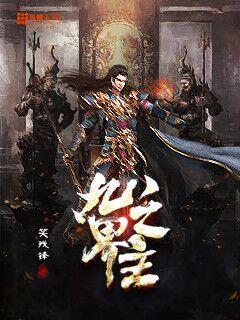
Certainly! Here's the structured article on "Optimizing Training Performance through Nutrition and Diet for Professional Athletes":
**Abstract:**
Professional athletes rely heavily on nutrition and diet to enhance their training performance. This article explores key factors that optimize their performance through dietary strategies. It examines the role of macronutrients, micronutrients, hydration, and timing of meals in maximizing athletic potential. By understanding and implementing these factors, athletes can achieve peak performance and maintain optimal health.
---
**1、Macronutrients:**
Macronutrients play a fundamental role in the diet of professional athletes, influencing energy levels, muscle recovery, and overall performance.
Athletes typically require a balanced intake of carbohydrates, proteins, and fats to meet their energy demands and support muscle repair.
Carbohydrates serve as a primary fuel source, especially during high-intensity activities, emphasizing the importance of adequate intake and timing to sustain performance.
Proteins are essential for muscle repair and growth, with athletes needing slightly higher amounts to recover effectively from training sessions.
Timing protein consumption around workouts is crucial for maximizing muscle synthesis and adaptation to exercise-induced stress.
A variety of protein sources, including lean meats, dairy, and plant-based options, offer athletes flexibility in meeting their nutritional needs.
Healthy fats contribute to sustained energy levels and support overall health in athletes, emphasizing sources like nuts, seeds, and fatty fish.
A balanced intake of omega-3 and omega-6 fatty acids aids in reducing inflammation and optimizing recovery post-training.
Adjusting fat intake based on training intensity and individual metabolic needs helps athletes maintain optimal body composition and performance.
Carbohydrates are critical for replenishing glycogen stores and providing quick energy during intense exercise sessions.
Choosing complex carbohydrates such as whole grains and vegetables ensures sustained energy release and supports prolonged athletic performance.
Strategic carb-loading before competitions or high-demand periods helps athletes maximize glycogen storage and enhance endurance.
---
**2、Micronutrients:**
Beyond macronutrients, micronutrients are essential for maintaining overall health, supporting immune function, and optimizing athletic performance.
Athletes require adequate intake of vitamins and minerals to support physiological processes, including bone health, oxygen transport, and muscle contraction.
Key micronutrients such as iron, calcium, vitamin D, and antioxidants play crucial roles in reducing the risk of injury and illness among athletes.
Iron is vital for oxygen transport and energy production, particularly significant for endurance athletes to prevent fatigue and optimize performance.
Calcium supports bone health and muscle function, essential for maintaining skeletal integrity and reducing the risk of stress fractures.
Ensuring sufficient intake of these minerals through diet and, if necessary, supplementation helps athletes meet their unique nutritional demands.
Vitamins such as vitamin D, C, and E contribute to immune function and recovery, aiding in the repair of muscle tissue and reducing oxidative stress.
Antioxidants from fruits, vegetables, and nuts help mitigate exercise-induced inflammation and support cellular repair processes post-exercise.
Strategies to incorporate a diverse range of micronutrient-rich foods into an athlete’s diet promote overall health and optimize training adaptations.
Hydration is critical for maintaining performance and preventing dehydration-related complications during training and competition.
Athletes should monitor fluid intake to replace losses through sweat, adjusting consumption based on environmental conditions and individual sweat rates.
Optimal hydration supports thermoregulation, nutrient transport, and cognitive function, enhancing overall athletic performance and recovery.
---
**3、Timing of Meals:**
The timing of meals and nutrient intake around training sessions is crucial for optimizing energy availability, promoting recovery, and supporting adaptation to exercise stress.
Strategic meal timing helps athletes maximize glycogen storage, enhance muscle protein synthesis, and minimize muscle breakdown.
Pre-exercise nutrition focuses on providing adequate carbohydrates for fuel and minimizing gastrointestinal distress during workouts.
Consuming a balanced meal or snack containing carbohydrates and a moderate amount of protein 2-4 hours before exercise provides sustained energy and supports muscle function.
Hydration before exercise ensures adequate fluid balance and enhances thermoregulation during physical exertion, optimizing performance and reducing the risk of dehydration.
Immediately following exercise, consuming a combination of carbohydrates and proteins within the first 30 minutes to 2 hours supports glycogen replenishment and muscle repair.
Timing protein intake post-exercise stimulates muscle protein synthesis, facilitating recovery and adaptation to training-induced stress.
Incorporating micronutrients and fluids into post-exercise meals aids in rehydration, replenishment of electrolytes, and overall recovery.
Strategically timing meals and snacks throughout the day maintains stable blood sugar levels and sustains energy for consistent training performance.
Adjusting nutrient intake based on training volume and intensity helps athletes meet their energy demands and achieve optimal nutrient timing for enhanced performance.
Individualized nutrition plans tailored to training schedules and performance goals optimize nutrient timing strategies, supporting long-term athletic success.
---
**4、Conclusion:**
Optimizing training performance through nutrition and diet involves a comprehensive approach focusing on macronutrients, micronutrients, hydration, and meal timing.
By understanding the role of each component and implementing evidence-based strategies, athletes can enhance performance, support recovery, and maintain overall health.
Continued research and personalized nutrition plans are essential to meet the unique needs of professional athletes and maximize their athletic potential.
Overall, integrating these key factors into a structured nutrition plan empowers athletes to achieve peak performance and excel in their respective sports.
文章摘要:足球球员发带不仅仅是一种简单的装饰,它体现了球员个性与风格的重要标志。本文深入探讨了足球球员发带的穿戴文化,从历史发展、风格特征、流行趋势到文化影响,揭示了这一小物件在足球界的深远意义和变迁。
足球球员发带的最初用途
发带在足球比赛中的早期应用
历史背景下的发带风格演变
不同风格发带的设计与选择
发带如何反映球员个性特征
著名球员的发带风格案例分析
发带在时尚界的兴起与传播
流行文化对发带设计的影响
社交媒体与发带风格的全球化传播
发带作为文化符号的意义
发带如何在社会上引发讨论与反响
发带背后的商业化与文化价值
总结:
足球球员发带的穿戴文化不仅仅是一种时尚趋势,它承载着历史的变迁、个性的表达与全球化文化的交流。通过对其起源、风格特征、流行趋势和文化影响的分析,我们可以看到发带如何成为足球世界中不可或缺的一部分,不断演绎着足球文化的多样性与丰富性。
### 文章摘要
雄鹿全体球员联袂追梦,走向辉煌新篇章。他们不仅仅是一个篮球队,而是一个团结协作、追求卓越的集体。本文将从球队历史、核心球员、战术风格以及文化影响四个方面,深入探讨雄鹿如何凭借团队力量和个人才华,在NBA舞台上不断刷新辉煌。
---
### 1、历史沿革
雄鹿篮球队成立于1968年,始终以稳定的发展步伐演绎着属于自己的传奇。最初的雄鹿队面貌与今日已大相径庭,但无论是在球风还是管理层面,球队始终秉持着一贯的进取精神。从乔伊·卡尔松到后来的贝克斯塔夫·尤达赫、吉安尼斯·阿德托昆博,雄鹿队在每个时代都留下了属于自己的光辉瞬间。
进入21世纪以来,雄鹿队更是在不断调整自身战略,逐渐形成了以年轻球员为主的建队理念。他们通过聪明的选秀和精准的引援,逐步打造出一支具有竞争力的球队,为未来的辉煌奠定坚实基础。
雄鹿队的历史沿革不仅是篮球发展的见证,更是团队精神和坚持不懈的象征。
### 2、核心球员
吉安尼斯·阿德托昆博,作为雄鹿队的核心人物,他不仅仅是一名出色的球员,更是团队的灵魂和象征。阿德托昆博的进步和领导能力,不仅带动了球队的整体实力,也为年轻球员树立了榜样。
除了阿德托昆博之外,雄鹿队还拥有诸如克里斯·米德尔顿和埃里克·布莱索这样的关键球员。他们在场上的角色和贡献不可或缺,为球队提供了稳定的支持和多样化的战术选择。
这些核心球员的集体努力和协作,构成了雄鹿队不可替代的核心竞争力。
### 3、战术风格
雄鹿队的战术风格以速度和力量并存著称。他们善于利用阿德托昆博的身体优势进行内线进攻,并通过外线射手的精准命中提供了外界威胁。
在防守端,雄鹿队注重整体防守的协作和保护篮板的能力。他们通过高效的防守策略和团队合作,有效限制对手的得分能力。
雄鹿队的战术风格不仅体现了团队整体性的强大,更展示了他们对比赛节奏和战术应变的敏锐把握。
### 4、文化影响
雄鹿队不仅在赛场上有着卓越表现,在文化影响力方面也非常突出。他们积极参与社区建设和公益活动,为当地居民提供支持和帮助。
此外,雄鹿队还通过自身的成功和影响力,激励了无数年轻人追求梦想并投身篮球运动。他们的成功故事成为了激励新一代的动力源泉。
雄鹿队不仅仅是一支篮球队,更是一种积极向上的文化力量,影响和感染着更广泛的社会群体。
### 总结:
雄鹿全体球员联袂追梦,走向辉煌新篇章。他们不仅在竞技场上展现出顶尖的篮球水平,更通过团队合作和个人努力,为球迷和社会传递出正能量和激励。未来,随着球队的持续发展和成长,雄鹿队必将继续书写属于自己的辉煌篇章。
他们不仅仅是一个篮球队,更是一个共同追求卓越的集体,他们的故事将继续在篮球的舞台上被讲述和传颂。
### 文章摘要
本文探讨了体育界中球员摔水瓶事件背后的道德与职业精神之争。通过分析该事件在公众舆论中的反响,揭示了体育明星行为背后的职业道德标准与公众期待之间的紧张关系。文章从道德规范的挑战、职业形象的维护、公众形象的塑造以及媒体报道的影响四个方面深入探讨,最终总结了体育界如何应对类似事件,以及其对体育职业精神的影响。
---
体育界作为一个公众关注度极高的领域,对于球员的道德行为有着严格的要求。每一个行为举止都可能成为公众舆论焦点,尤其是当球员在赛场之外展示出不当行为时。例如,摔水瓶事件不仅仅是一次情绪失控,更是对道德规范的挑战。这种行为可能违反体育赛场上的竞技精神和道德准则,严重影响球员在公众心目中的形象。
此外,道德规范的挑战还表现在如何平衡球员的个人情绪与其在公众场合的行为规范之间。许多球员在比赛中面对压力时,难免情绪波动,这时候他们能否有效控制情绪,是道德规范所关注的重点之一。
最后,道德规范的挑战还涉及到体育管理机构及球员个人对于道德失范的处置和后续处理。体育界在此类事件中如何公正、迅速地处理,对于整个行业的道德建设有着深远的影响。
球员作为职业体育人士,其职业形象的维护是其职业生涯的关键之一。一旦发生类似摔水瓶事件的公众不满行为,将对球员的职业形象产生严重影响。职业形象不仅仅是指球员在赛场上的表现,更是涵盖了其在日常生活中的行为举止。
维护职业形象的重要性体现在球员在社交媒体上的言行举止,以及在公众活动中的表现。球员的每一个言论和行为都可能被放大和解读,从而影响其在粉丝和赞助商心目中的形象。
此外,职业形象的维护也包括了对于失误和道歉的处理。如何及时承认错误、道歉并采取补救措施,对于球员重建职业形象至关重要。
公众形象的塑造不仅仅依赖于球员个人的行为表现,还包括了媒体对于球员形象的报道和解读。当球员发生摔水瓶事件等不当行为时,媒体如何报道、如何解读将直接影响公众对球员形象的认知。
媒体报道往往会对事件进行深入分析,并将其与体育界的职业精神和道德要求进行比较。这种比较和解读将直接影响公众对球员的态度和看法,进而影响球员的职业发展和形象修复。
球员本人如何与媒体沟通、如何处理公众关注和舆论反应,也是公众形象塑造中不可或缺的一部分。
媒体作为信息传递的主要渠道,其报道风格和角度将直接影响到事件的公众化程度和球员形象的重建过程。媒体报道不仅仅是对事件的事实陈述,更是对事件背景、原因和影响的分析和评估。
媒体报道的影响力体现在舆论的形成和公众对事件的态度。一篇深刻的报道可能改变公众对球员事件的初步看法,影响其职业生涯和形象的发展。
此外,媒体还承担着对球员进行公众教育和职业规范引导的责任。通过对球员事件的深入分析和报道,媒体可以帮助公众理解体育界的职业精神和道德标准,促进体育行业的良性发展。
总结:
综上所述,球员摔水瓶事件不仅仅是一次简单的情绪失控,更是体育界职业道德与精神的重要较量。体育界在面对类似事件时,需要综合考虑道德规范的挑战、职业形象的维护、公众形象的塑造以及媒体报道的影响。通过正确的处理和引导,体育界能够更好地维护其道德准则和职业形象,为行业的长远发展奠定基础。
在公众舆论的监督和体育管理机构的引导下,相信未来的体育界将更加注重道德规范和职业精神的传承,共同促进全球体育事业的发展。
文章摘要:在范加尔的带领下,年轻球员们通过坚定的训练与比赛,不断磨砺自己的技艺与心态,展现出成长与进步的过程。他们在领导者的引导下,踏上了足球征程的新篇章。
---
范加尔以严谨的战术布置和精准的技术指导为基础,塑造了球队的整体风格。他注重基本功训练,从传控到防守策略,每个细节都严格要求。
他通过模拟比赛情境,让年轻球员在压力下学习应对,锻炼其决策能力和应变能力。
范加尔不仅注重比赛技术,还强调心理素质的培养,通过心理辅导和团队建设,提升球员的团队凝聚力和个人抗压能力。
刚加入球队时,年轻球员们面临着适应范加尔战术体系的挑战。他们通过训练和比赛逐渐理解和掌握了战术要求,技术水平得到了显著提高。
范加尔重视年轻球员的个性发展,鼓励他们在比赛中展示创造力和独特的技术特点,同时要求他们在团队中扮演积极角色。
年轻球员们在比赛中经历了起伏,但通过不断总结和调整,他们逐渐找到了适合自己的角色和位置。
范加尔通过集体训练和集体活动培养团队凝聚力,每位球员都能感受到团队的力量和合作的重要性。
他鼓励球员们在场上互相支持,建立起相互信任的关系,这种信任关系不仅在比赛中体现,也在日常训练和生活中有所体现。
团队精神的培养使得球队在面对困难和挑战时更加团结,能够共同克服难关,取得更好的成绩。
范加尔不仅仅是球队的教练,更是年轻球员们的导师和榜样。他的教导和指导将会在他们未来的职业生涯中起到长远的影响。
通过在范加尔的带领下砥砺前行,年轻球员们不仅技术上更加成熟,心理素质也得到了提升,为他们今后的职业生涯打下了坚实的基础。
范加尔的理念和教育方式将继续影响着这些球员,成为他们足球人生中宝贵的财富。
总结:
范加尔带领年轻球员砥砺前行,不仅在技术战术上进行了深度的培养,更在心理素质和团队凝聚力方面进行了全面提升,为球员们的职业生涯奠定了坚实的基础。
他的教导不仅改变了球队的风格和竞技水平,也在每位球员的成长路上留下了深远的烙印。
格利:一个冉冉升起的足球巨星
摘要:格利是一名年轻而有潜力的足球运动员,他的出色表现和坚定决心让他在足球界脱颖而出,成为备受瞩目的新星。本文将从他的个人背景、职业生涯、比赛表现和未来前景四个方面详细阐述格利的故事。
格利出生于一个足球家庭,从小对足球有浓厚的兴趣。他的家庭对他的成长和职业生涯产生了重要影响。
在青少年时期,格利为自己的家乡球队效力,展现出了出色的天赋和技术,受到了俱乐部和国家队的青睐。
格利的成长经历和家庭背景为他未来的足球生涯奠定了坚实基础。
从加入职业俱乐部开始,格利展现出了对足球的热爱和不懈努力。他通过不断的训练和比赛,逐渐成长为球队的核心球员。
在职业生涯的初期,格利经历了许多挑战和困难,但他总是能够积极面对,并逐渐获得了主教练和球迷们的认可。
他在职业生涯中展现出了出色的技术和领导能力,成为球队中不可或缺的一环。
在比赛中,格利展现出了出色的个人能力,他能够在关键时刻挺身而出,为球队创造机会并取得进球。
他在比赛中展现出的稳定性和冷静头脑让他成为球队的关键先生,他的表现为球队赢得了许多关键比赛。
在国际比赛中,他代表国家队参加了重要的比赛,展现出了超越年龄的成熟表现,为国家队赢得了荣誉。
格利的未来前景非常光明,他已经成长为一名备受瞩目的球星,并且备受各大俱乐部的关注。
他的个人能力和职业精神让人们对他的未来充满期待,他有望成为足球界的巨星,并为自己的国家赢得更多荣誉。
格利的未来将不仅仅局限于足球场上,他还有可能成为体育界的典范和领袖。
总结:
格利是一名充满潜力和天赋的足球新星,他的个人成长经历和职业生涯充满着魅力和动人故事。无论是在球场上还是球场外,他都展现出了非凡的魅力和影响力,成为人们关注和追随的对象。